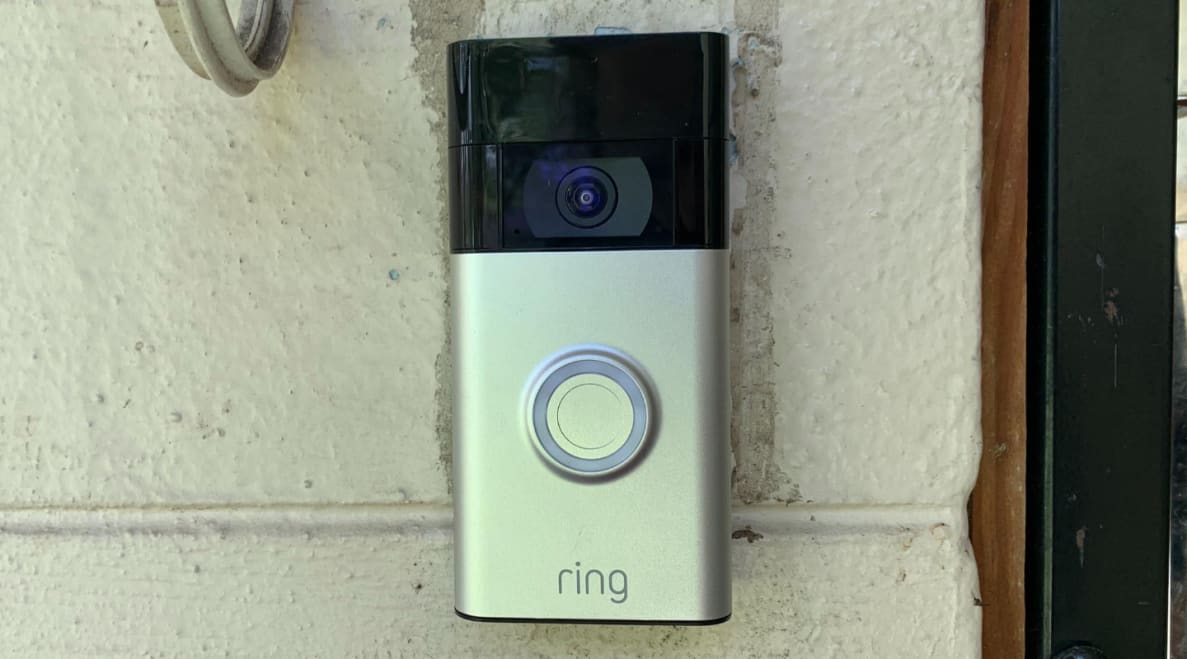Pros
-
Clear video and audio
-
Reliable
Cons
-
Only works with Alexa
-
Battery can be a pain to charge
If it feels like Ring is rolling out one new doorbell after another, you’re not wrong. Earlier this year, the smart home company introduced the Ring Video Doorbell 3 and Ring Video Doorbell 3 Plus. In addition to those new models, Ring released the new and improved second-generation Ring Video Doorbell—an upgrade from the first doorbell Ring released in 2014.
Smart doorbell cameras have come a long way over the last six years, so it makes sense that Ring revised its most affordable smart doorbell with 1080p resolution (up from 720p), clearer and crisper night vision, and loud, easy to-understand two-way audio.
About the Ring Video Doorbell (second-generation)
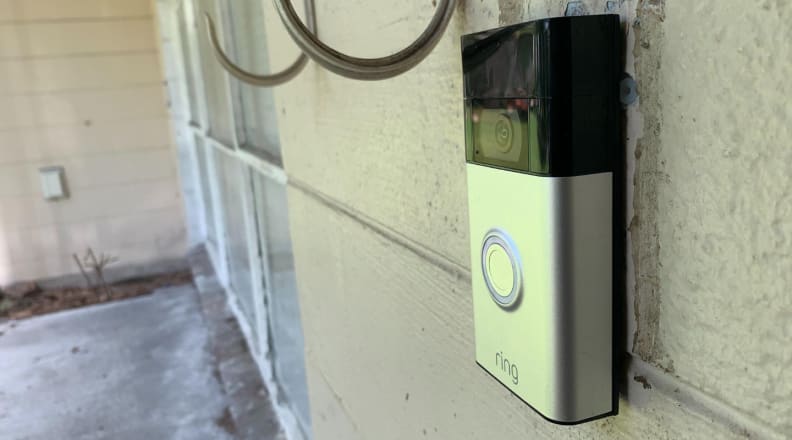
The Ring Video Doorbell (second-generation) maintains the same look and feel of other Ring doorbell cameras.
Here are the Ring Video Doorbell (second-generation) specs:
- Price: $99.99
- Colors: Satin Nickel and Venetian Bronze
- Connectivity: 2.4GHz WiFi
- Smart assistants: Amazon Alexa
- Hardwire or battery-powered: Both
- Dimensions: 2.4” H x 4.98” W x 1.1” D
In terms of operation and ease of use, Ring's latest is comparable to most other Ring doorbells I’ve tested, including the Ring 3 Plus. During our tests, the doorbell never lost its connection to WiFi and was reliable at sending timely notifications to my smartphone. And, if the thought of installing a smart doorbell sounds daunting to you, fear not. The doorbell comes with all of the drill bits and hardware you need for an easy installation, as well as clear instructions for a simple, 5-minute setup.
The newest Ring does not have the Pre-Roll feature like the 3 Plus, which captures the first four seconds before any motion detection. Pre-Roll feature like the 3 Plus, which captures the first four seconds before any motion detection. Like most connected doorbells, a subscription plan is required to access features like 60-day video history, viewing missed alerts, sharing and saving clips, and Snapshot Capture, a new feature that periodically captures images in between events throughout the day. The Ring Protect Basic plan costs $3 a month or $30 annually. The doorbell comes with a free, 30-day trial to give you a feel for all of the features before signing up.
What we like
Great video quality for an affordable price
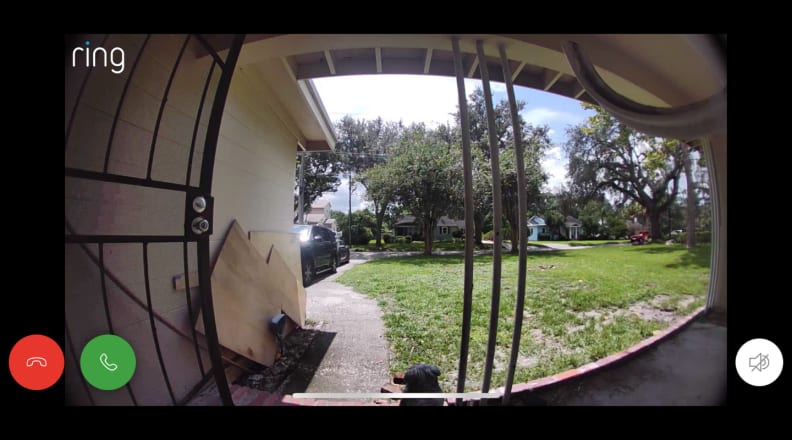
The Ring Video Doorbell (second-generation) displays a slightly moodier hue than other Ring doorbells. (Keep scrolling to see the view from the Ring 3 Plus.)
One of the most noticeable improvements on the all-new Ring Video Doorbell is the video quality. Leaping from 720p to 1080p, the second-generation doorbell camera offers the same video resolution as the Ring 3 Plus. Resolution aside, though, the color and saturation look worse on the second-generation doorbell than the Ring 3 Plus. Even in full sun, the color is a bit darker on the Ring Video Doorbell (second-generation).
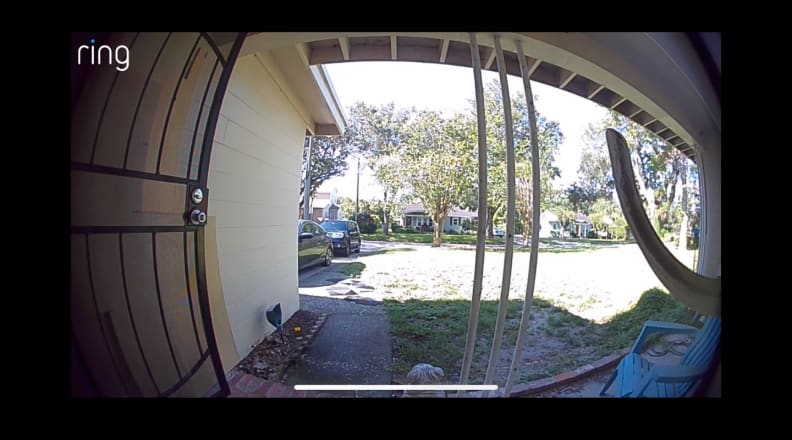
For comparison's sake, here's a view from the Ring 3 Plus. Same resolution, slightly different color.
But the color issue feels like small potatoes given the value this doorbell offers (it’s a whopping $140 less than the Ring 3 Plus for the same resolution) and despite the darker hue, the video is still clear and easy to see.
The field of view on the second-generation doorbell is a hair narrower (155 degrees) than other Ring doorbells (160 degrees), but it ultimately didn’t hinder my view at all.
Additionally, the new Ring video doorbell supports night vision (which appears in black and white), and the quality is decent. If you have exterior lights, like a front porch light above your doorbell, the camera will record in full color, which I found to be clearer than the black and white view.
Security improvements within the Ring app
After being plagued by user privacy issues last year, Ring beefed up its in-app security features with a new Control Center.
While these new security features aren’t specific to the Ring Video Doorbell—they're available across all Ring products—it’s good to have an idea of which privacy controls are available. For me, the two-factor authentication, the option to view and remove linked accounts and shared users, and control over which devices and third-party apps are synced to the account bring peace of mind.
However, it’s safe to assume there’s always a risk involved with inviting a connected gadget into your home. Ultimately, the new control panel is a step in the right direction to help consumers feel comfortable using Ring products.
What we don’t like
Motion zones don’t give users enough control
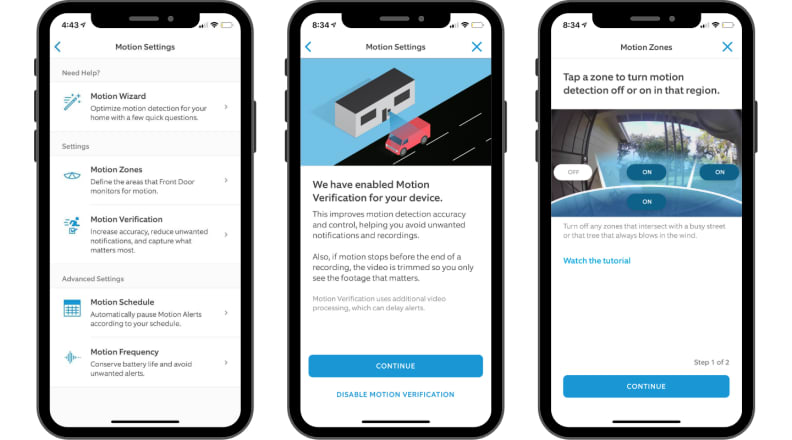
While Ring made improvements to the doorbell's motion settings, there's no option to create truly customizable motion zones like Nest. However, the Ring app offers several of motion settings to toy with.
There are a total of four predetermined motion zones that can be turned on or off within the Ring app. While this helps prevent unwanted motion detection alerts, it could go a step further by offering click and drag motion zones like our favorite video doorbell, the Nest Hello. It’s a simple feature that goes a long way in helping to avoid false motion alerts, but it’s currently unavailable on Ring doorbells.
Other settings like motion scheduling and motion frequency give you control over when and how often the doorbell sends alerts, but I still didn’t find this as beneficial as drawing my own motion zones.
Giving users control to define motion zones immediately outside of their front door would give this doorbell even more value than it already offers.
Recharging the battery can be a pain
While giving the option for hardwiring or battery power makes the Ring Video Doorbell a versatile option for any home security setup, charging the battery is a bit of a pain. The entire doorbell must be removed and plugged in to charge the built-in battery, leaving you with a bare front door. (If you plan to hardwire the doorbell, this is a non-issue.)
The Ring 3 and Ring 3 Plus both come with removable battery packs, so I was bummed that feature wasn't carried through on the newly-overhauled Ring Video Doorbell.
Amazon Alexa only
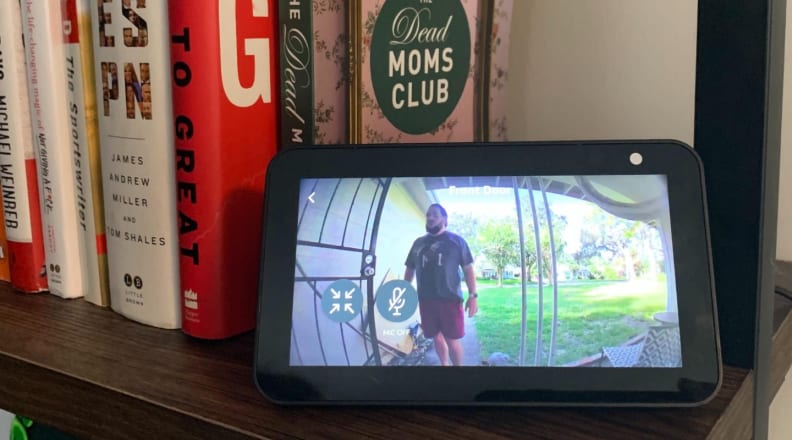
Alexa-enabled smart displays like the Amazon Echo Show 5 (pictured) make it easy to see who is at the door.
There’s no arguing that Alexa is the most popular smart assistant out there and is the natural choice for Amazon's Ring products, but she’s not the only widely-used smart assistant (I’m looking at you, Siri and Google Assistant). Plenty of other doorbells, like our best value pick, the Eufy Video Doorbell, offer integration with Alexa and Google Assistant.
However, if your home is full of Alexa-enabled smart speakers, the Ring Video Doorbell (second-generation) is a natural fit. Echo speakers can be used like chimes, making announcements when someone is at the door. If you have an Alexa-enabled smart display, the doorbell camera’s live stream will show up on the screen when the doorbell is pressed, which is super useful for quickly glancing to see who is there.
Should you buy it?
Yes, it’s an affordable and reliable smart doorbell
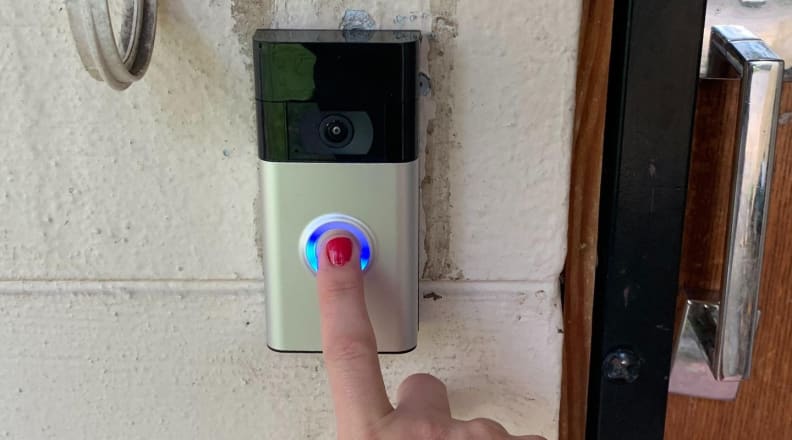
The Ring Video Doorbell (second-generation) is a viable option for any front door.
If you’re all in on Amazon Alexa or have other Ring smart home product, there’s no good reason to pass over this doorbell for the more expensive Ring 3 Plus—unless you want access to Ring’s Pre-Roll footage. With a $99.99 MSRP, the Ring Video Doorbell (second-generation) offers a lot of value when compared to the Ring 3 Plus (MSRP $229.99). It’s a reliable doorbell that comes with all of the same security and motion features of Ring’s more expensive doorbells without the hefty price tag.
Alternatively, the very best affordable smart doorbell you can buy is the Eufy Video Doorbell. Although it retails for $60 more than the Ring Video Doorbell (second-generation), you can frequently find it on sale for around $140. It works with both Alexa and Google Assistant, has 2560 x 1920 pixel resolution (a big jump from the second-gen Ring Video Doorbell), and comes with a free storage plan so you don't have to pay more to access extra features like you do with Ring.
Get the Ring Video Doorbell (second-generation) on Amazon for $99.99
Meet the tester
Rachel Murphy is Reviewed's home editor. She holds a journalism degree from the University of Central Florida. Prior to joining the team, she worked as a freelance writer for publications like Insider and Mashable, and as an associate editorial producer for Good Morning America. Aside from smart home tech, her interests include food, travel, parenting, and home renovation. You can usually find her sipping on coffee at any time of the day.
Checking our work.
Our team is here to help you buy the best stuff and love what you own. Our writers, editors, and experts obsess over the products we cover to make sure you're confident and satisfied. Have a different opinion about something we recommend? Email us and we'll compare notes.
Shoot us an email